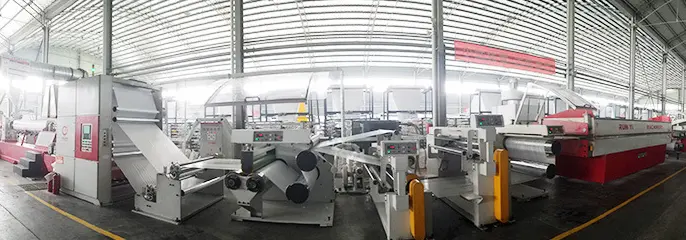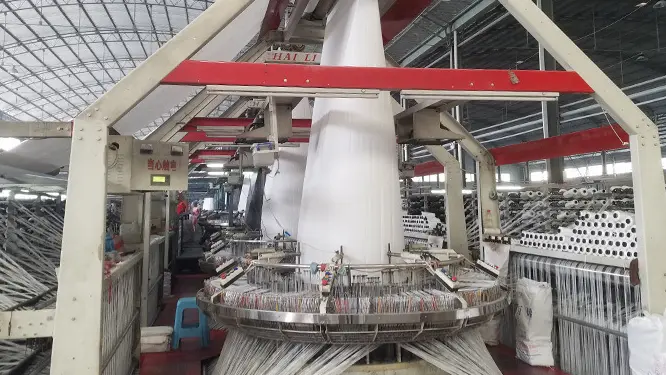Today, we will study the production process of FIBC ton bags and their importance in the field of industrial packaging and transportation.
The manufacturing process of FIBC bags starts with design, which is the drawing. The designer of the bag will consider factors such as load-bearing capacity, size, and material according to different usage needs, and draw detailed ton bag structure drawings. These drawings provide important guidance for every step of subsequent production.
Next is material selection. FIBC big bags are usually made of polypropylene or polyethylene woven fabric. These materials have excellent tensile resistance, wear resistance, and UV resistance, ensuring the stability of ton bags in extreme environments. Moreover, FIBC liners may be added as needed, such as for the transportation of food grade or hazardous materials, special liner materials may be used to provide additional protection and strength support.

Weaving fabric is the core process for making FIBC bulk bags. A weaving machine, also known as a circular loom, interlaces polypropylene or polyethylene filaments into a uniform mesh structure, forming a strong and tough fabric substrate. During this process, precise calibration of the machine is crucial as it directly affects the quality and load-bearing capacity of the ton bag. The woven fabric also needs to undergo heat setting treatment to improve its dimensional stability and durability.

Then we will continue to discuss about the cutting and stitching process of FIBC bags. According to the requirements of the design drawings, use a jumbo bag fabric cutting machine to accurately cut the woven fabric into the shape and size required by the customer. Next, professional stitching workers will use strong stitch thread to stitch these fabric parts together, forming the basic structure of a FIBC bag. Every stitch and thread here is crucial because they directly affect whether the bulk bag can safely withstand the weight of the goods.

Next is the installation of accessories. In order to improve the versatility and safety of FIBC ton bags, various accessories such as lifting rings, bottom U-shaped brackets, feed ports, and exhaust valves will be installed on the ton bags. The design and installation of these accessories must comply with international safety standards to ensure stability and operational safety during transportation.
The final step is to inspect and package. Each FIBC bag produced must undergo strict quality testing, including bearing capacity testing, pressure resistance testing, and leakage testing, to ensure the quality of the product. The tested ton bags are cleaned, folded, and packaged, loaded onto a cargo ship from port of discharge, and ready to be shipped to customer warehouses and factories around the world.

It is very important for the application of FIBC ton bags in the field of industrial packaging and transportation. They not only provide an efficient and economical mode of transportation, but also greatly save storage space and reduce the occupation of environmental resources when not in use due to their foldable features. In addition, FIBC bags can easily adapt to the needs of various industries, and its application range is wide: from building materials to chemical products, from agricultural products to mineral raw materials, and so on. For example, we often see ton bags used on construction sites, which gradually become part of our daily lives.
As we can see , it is a complex process about the production process of FIBC ton bags , which is involving so many links such as design, material selection, weaving, cutting and stitching, accessory installation, and inspection and packaging. Each step needs strict control by professional workers to ensure the quality and safety of the final product. FIBC ton bags themselves play a non-substitutable part in industrial packaging and transportation, providing convenient, safe, and economical solutions for global trade.
Post time: Mar-28-2024



